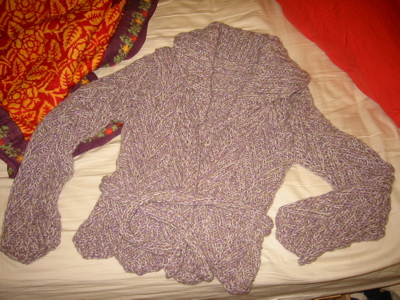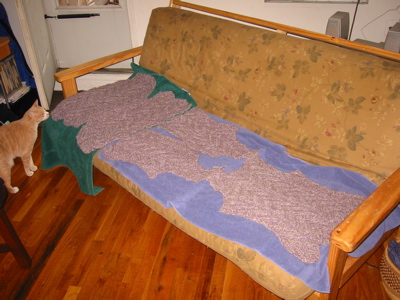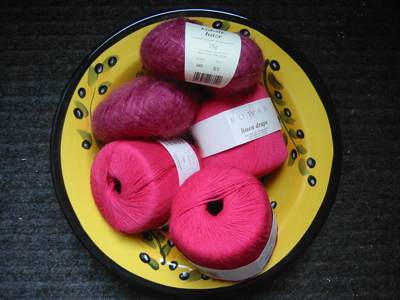Lightning weather
Temperature: 48 degrees Fahrenheit. Wind: 13 mph east-northeast. Precipitation: Heavy mist and light rain (mizzle, we call it in the Northwest). English weather. Pacific Northwest weather. And today, New York weather. Perfect conditions to debut Lightning, really. And she deserves a more interesting backdrop than the patio, so an excursion to Central Park was in order. (Warning: light levels were so low, even in the middle of the day, that these photos may show up very dark in IE. End plug for Firefox.)



All photos by my handsome husband, who deserves special thanks for working in such miserable weather without even a long-sleeved shirt.
Project notes:
Lightning, from the Rowan Plaid collection by Kim Hargreaves. I used 7 and a half balls of Rowan Plaid in the color “lavender mist” and knit the smaller of the two sizes. When I cast on for this sweater last winter, it was going to be my second adult sweater: I was so enchanted by the pretty scalloped edging that I disregarded the “most difficult” pattern rating completely. Lightning kept me on my toes, and there was much frogging, but she taught me a great deal. I learned about slanting increases and decreases and the way they shape a design. I learned double decreases, three-needle bind off, and how to read a chart. Most importantly, I learned to read my knitting rather than the chart. And so I can heartily recommend this to new knitters: don’t be afraid to tackle something that looks too difficult. Bring your patience, embrace the Frog, and don’t hesitate to ask for help, but if you keep your wits about you you’ll learn more than you ever could with safe, easy projects. It’s been a year now since I finished that first scarf, and all the real progress I’ve made has come when I’ve set my sights on patterns like this one. End sermon.
I probably didn’t need to lengthen the sleeves, but it’s nice to be able to tuck your fingers up inside if you aren’t wearing gloves. The only other modification I made was to stitch the fold in the shawl collar in place at the front edges to counteract a bit of floppiness and encourage the proper shape. I attached the collar by picking up stitches along the neckline and along the cast-on edge of the collar and then using a three-needle bind off. It looks a little tidier from the inside, which is likely to be exposed because the sweater has no closure system apart from the belt. I’m thinking of adding a single hook-and-eye at the base of the collar, as it does gap open a bit. But all in all, I deem this project a success, and I’m glad to have her finished at last!




